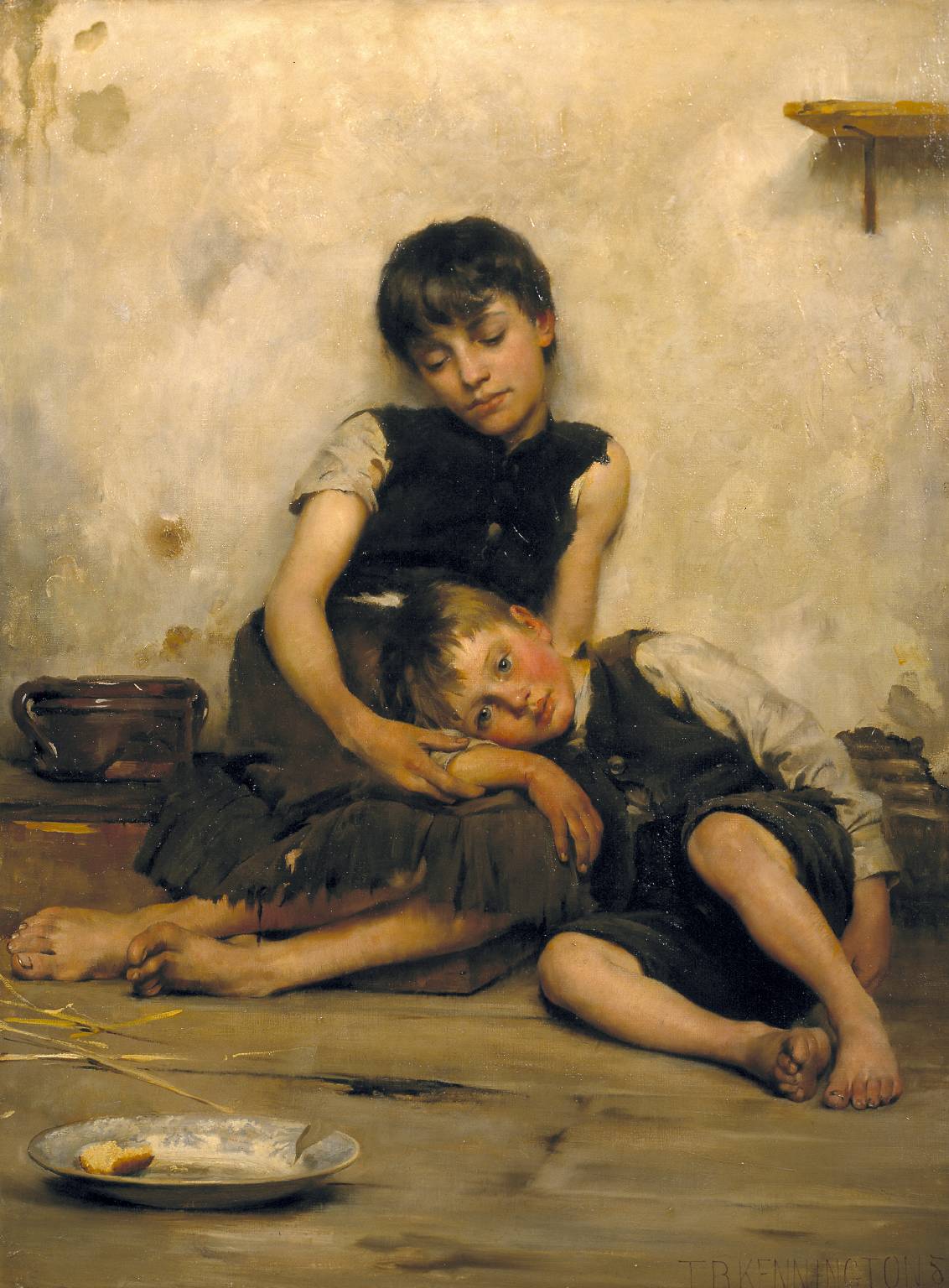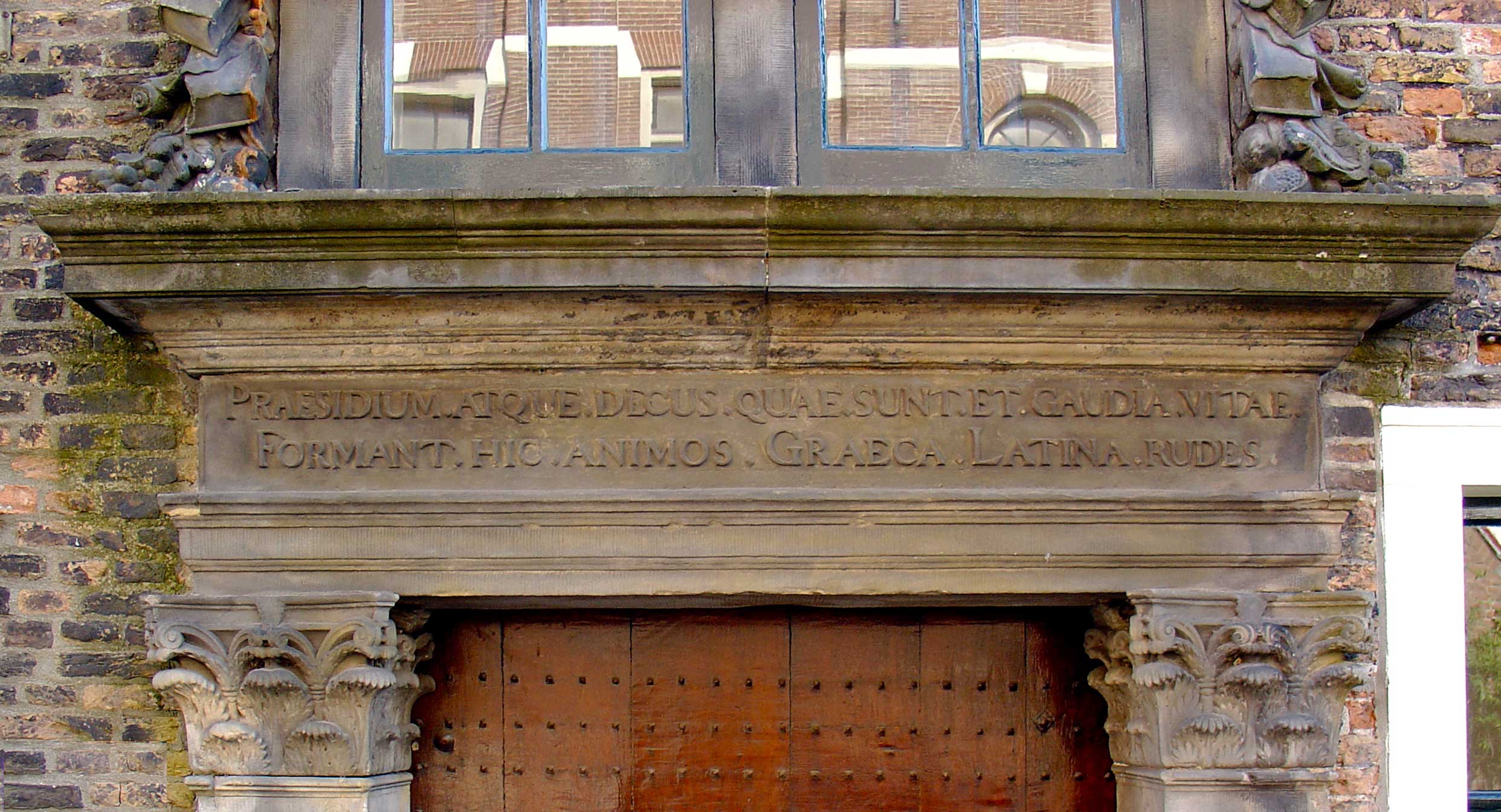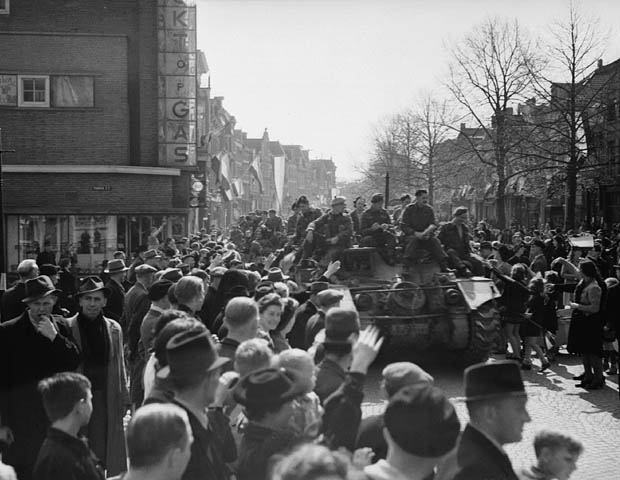|
Eeltsje Hiddes Halbertsma
Eeltsje Hiddes Halbertsma ( Frisian form: Eeltsje Hiddes Halbertsma, pron. àeÀêl ß«ù Ààh…™d…ôs Ààh…îlb«ùtsma(the r is silent); Dutch form: Eeltje Hiddes Halbertsma, pron. àeÀêlc«ù Ààh…™d…ôs Ààhalb«ùrtsma (Grou, 8 October 1797 ‚Äì there, 22 March 1858)Breuker 1993, p. 592. was a Frisian writer, poet and physician,Breuker 1993, pp. 592‚Äì594. and the youngest of the Halbertsma Brothers.Breuker 1993, p. 587. He became well known when he and his elder brother Justus published the poetry and short story collection ''De Lapekoer fan Gabe Skroar'' in 1822.Dykstra and Oldenhof, p. 37. Afterwards, this work was continually expanded, and also came to include contributions by a third brother, Tsjalling,Wiersma, p. 9. until all the Halbertsma Brothers' prose and poetry was posthumously collected in 1871 to become the famous work ''Rimen en Teltsjes''.Breuker 1993, pp. 603‚Äì606. This book played a role of crucial importance in the development of a new literary tradition after Western Fris ... [...More Info...] [...Related Items...] OR: [Wikipedia] [Google] [Baidu] |
Grou
Grou ( nl, Grouw) is a town in the province Friesland of the Netherlands and had around 5655 citizens in January 2017. Since 2014 Grou is part of the municipality of Leeuwarden. The town is located on the lake and the . Heineken operated a distribution centre for Friesland in Grou for 25 years until 2004. It used to be the capital of the municipality of before the reorganization of municipalities in 1984, and capital of the municipality of Boarnsterhim until 2014. While the rest of the Netherlands celebrates Sinterklaas (Saint Nicholas) on December 5, Grou instead celebrates a unique local variation of this children's holiday known as on February 21. In local lore Sint Piter is a distinct character separate from Saint Nicholas, and was historically known as the patron saint for local fishermen. A nickname for the town is Tsiisferdûnsers, meaning cheese dancers, from a story where a fiddler was paid with cheese at a village dance. Transport The town is located at an exit o ... [...More Info...] [...Related Items...] OR: [Wikipedia] [Google] [Baidu] |
Work Of Art
A work of art, artwork, art piece, piece of art or art object is an artistic creation of aesthetic value. Except for "work of art", which may be used of any work regarded as art in its widest sense, including works from literature and music, these terms apply principally to tangible, physical forms of visual art: *An example of fine art, such as a painting or sculpture. *Objects in the decorative arts or applied arts that have been designed for aesthetic appeal, as well as any functional purpose, such as a piece of jewellery, many ceramics and much folk art. *An object created for principally or entirely functional, religious or other non-aesthetic reasons which has come to be appreciated as art (often later, or by cultural outsiders). *A non-ephemeral photograph or film. *A work of installation art or conceptual art. Used more broadly, the term is less commonly applied to: *A fine work of architecture or landscape design *A production of live performance, such as ... [...More Info...] [...Related Items...] OR: [Wikipedia] [Google] [Baidu] |
Amsterdam
Amsterdam ( , , , lit. ''The Dam on the River Amstel'') is the Capital of the Netherlands, capital and Municipalities of the Netherlands, most populous city of the Netherlands, with The Hague being the seat of government. It has a population of 907,976 within the city proper, 1,558,755 in the City Region of Amsterdam, urban area and 2,480,394 in the Amsterdam metropolitan area, metropolitan area. Located in the Provinces of the Netherlands, Dutch province of North Holland, Amsterdam is colloquially referred to as the "Venice of the North", for its large number of canals, now designated a World Heritage Site, UNESCO World Heritage Site. Amsterdam was founded at the mouth of the Amstel River that was dammed to control flooding; the city's name derives from the Amstel dam. Originally a small fishing village in the late 12th century, Amsterdam became a major world port during the Dutch Golden Age of the 17th century, when the Netherlands was an economic powerhouse. Amsterdam is th ... [...More Info...] [...Related Items...] OR: [Wikipedia] [Google] [Baidu] |
Orphan
An orphan (from the el, ορφανός, orphanós) is a child whose parents have died. In common usage, only a child who has lost both parents due to death is called an orphan. When referring to animals, only the mother's condition is usually relevant (i.e. if the female parent has gone, the offspring is an orphan, regardless of the father's condition). Definitions Various groups use different definitions to identify orphans. One legal definition used in the United States is a minor bereft through "death or disappearance of, abandonment or desertion by, or separation or loss from, both parents". In the common use, an orphan does not have any surviving parent to care for them. However, the United Nations Children's Fund (UNICEF), Joint United Nations Programme on HIV and AIDS (UNAIDS), and other groups label any child who has lost one parent as an orphan. In this approach, a ''maternal orphan'' is a child whose mother has died, a ''paternal orphan'' is a child whose fath ... [...More Info...] [...Related Items...] OR: [Wikipedia] [Google] [Baidu] |
Latin School
The Latin school was the grammar school of 14th- to 19th-century Europe, though the latter term was much more common in England. Emphasis was placed, as the name indicates, on learning to use Latin. The education given at Latin schools gave great emphasis to the complicated grammar of the Latin language, initially in its Medieval Latin form. Grammar was the most basic part of the trivium and the Liberal arts — in artistic personifications Grammar's attribute was the birch rod. Latin school prepared students for university, as well as enabling those of middle class status to rise above their station. It was therefore not unusual for children of commoners to attend Latin schools, especially if they were expected to pursue a career within the church.Wiesner-Hanks, p122. Although Latin schools existed in many parts of Europe in the 14th century and were more open to the laity, prior to that the Church allowed for Latin schools for the sole purpose of training those who would one d ... [...More Info...] [...Related Items...] OR: [Wikipedia] [Google] [Baidu] |
Leeuwarden
Leeuwarden (; fy, Ljouwert, longname=yes /; Town Frisian: ''Liwwadden''; Leeuwarder dialect: ''Leewarden'') is a city and municipality in Friesland, Netherlands, with a population of 123,107 (2019). It is the provincial capital and seat of the Provincial Council of Friesland. It is located about 50 km west of Groningen and 110 km north east from the Dutch capital Amsterdam (as the crow flies). The region has been continuously inhabited since the 10th century. It came to be known as Leeuwarden in the early 9th century AD and was granted city privileges in 1435. It is the main economic hub of Friesland, situated in a green and water-rich environment. Leeuwarden is a former royal residence and has a historic city centre, many historically relevant buildings, and a large shopping centre with squares and restaurants. Leeuwarden was awarded the title European Capital of Culture for 2018. The Elfstedentocht (Eleven Cities Tour), an ice skating tour passing the eleven cities of Fri ... [...More Info...] [...Related Items...] OR: [Wikipedia] [Google] [Baidu] |
Gelderland
Gelderland (), also known as Guelders () in English, is a province of the Netherlands, occupying the centre-east of the country. With a total area of of which is water, it is the largest province of the Netherlands by land area, and second by total area. Gelderland shares borders with six other provinces ( Flevoland, Limburg, North Brabant, Overijssel, South Holland and Utrecht) and the German state of North Rhine-Westphalia. The capital is Arnhem (pop. 159,265); however, Nijmegen (pop. 176,731) and Apeldoorn (pop. 162,445) are both larger municipalities. Other major regional centres in Gelderland are Ede, Doetinchem, Zutphen, Harderwijk, Tiel, Wageningen, Zevenaar, and Winterswijk. Gelderland had a population of 2,084,478 as of November 2019. It contains the Netherlands's largest forest region (the Veluwe), the Rhine and other major rivers, and a significant amount of orchards in the south ( Betuwe). History Historically, the province dates from states of the Holy Roman ... [...More Info...] [...Related Items...] OR: [Wikipedia] [Google] [Baidu] |
Sailor
A sailor, seaman, mariner, or seafarer is a person who works aboard a watercraft as part of its crew, and may work in any one of a number of different fields that are related to the operation and maintenance of a ship. The profession of the sailor is old, and the term ''sailor'' has its etymological roots in a time when sailing ships were the main mode of transport at sea, but it now refers to the personnel of all watercraft regardless of the mode of transport, and encompasses people who operate ships professionally, be it for a military navy or civilian merchant navy, as a sport or recreationally. In a navy, there may be further distinctions: ''sailor'' may refer to any member of the navy even if they are based on land; while ''seaman'' may refer to a specific enlisted rank. Professional mariners Seafarers hold a variety of professions and ranks, each of which carries unique responsibilities which are integral to the successful operation of an ocean-going vessel. A ship's c ... [...More Info...] [...Related Items...] OR: [Wikipedia] [Google] [Baidu] |
Calvinism
Calvinism (also called the Reformed Tradition, Reformed Protestantism, Reformed Christianity, or simply Reformed) is a major branch of Protestantism that follows the theological tradition and forms of Christian practice set down by John Calvin and other Reformation-era theologians. It emphasizes the sovereignty of God and the authority of the Bible. Calvinists broke from the Roman Catholic Church in the 16th century. Calvinists differ from Lutherans (another major branch of the Reformation) on the spiritual real presence of Christ in the Lord's Supper, theories of worship, the purpose and meaning of baptism, and the use of God's law for believers, among other points. The label ''Calvinism'' can be misleading, because the religious tradition it denotes has always been diverse, with a wide range of influences rather than a single founder; however, almost all of them drew heavily from the writings of Augustine of Hippo twelve hundred years prior to the Reformation. The na ... [...More Info...] [...Related Items...] OR: [Wikipedia] [Google] [Baidu] |
Mennonites
Mennonites are groups of Anabaptist Christian church communities of denominations. The name is derived from the founder of the movement, Menno Simons (1496–1561) of Friesland. Through his writings about Reformed Christianity during the Radical Reformation, Simons articulated and formalized the teachings of earlier Swiss founders, with the early teachings of the Mennonites founded on the belief in both the mission and ministry of Jesus, which the original Anabaptist followers held with great conviction, despite persecution by various Roman Catholic and Mainline Protestant states. Formal Mennonite beliefs were codified in the Dordrecht Confession of Faith in 1632, which affirmed "the baptism of believers only, the washing of the feet as a symbol of servanthood, church discipline, the shunning of the excommunicated, the non-swearing of oaths, marriage within the same church, strict pacifistic physical nonresistance, anti-Catholicism and in general, more emphasis on "true Christ ... [...More Info...] [...Related Items...] OR: [Wikipedia] [Google] [Baidu] |
Brothers Halbertsma
The Brothers Halbertsma were three brothers born in the Frisian village of Grou towards the end of the 18th century, who played a role of crucial importance for the development of a written literature in the Western Frisian language.Breuker, p. 587.Jensma, p. 197. These three brothers were: * Justus (or Joast) Hiddes Halbertsma (1789–1869). He studied theology in Amsterdam, and afterwards was a Mennonite minister in Bolsward and since 1822 in Deventer. He was a somewhat distant and cerebral author of short stories and poems. In his works ideas were more important than emotions. Besides his literary achievements he was also a scholar of linguistics, and with his (unfinished) ''Lexicon Frisicum'' he took the first step towards the composition of a dictionary of the Western Frisian language. *Tsjalling Hiddes Halbertsma (1792–1852). He kept their father's bakery running after the untimely death of both their parents in 1809, later becoming an international merchant in dairy p ... [...More Info...] [...Related Items...] OR: [Wikipedia] [Google] [Baidu] |
.jpg)





_Hiddes_Halbertsma.jpg)